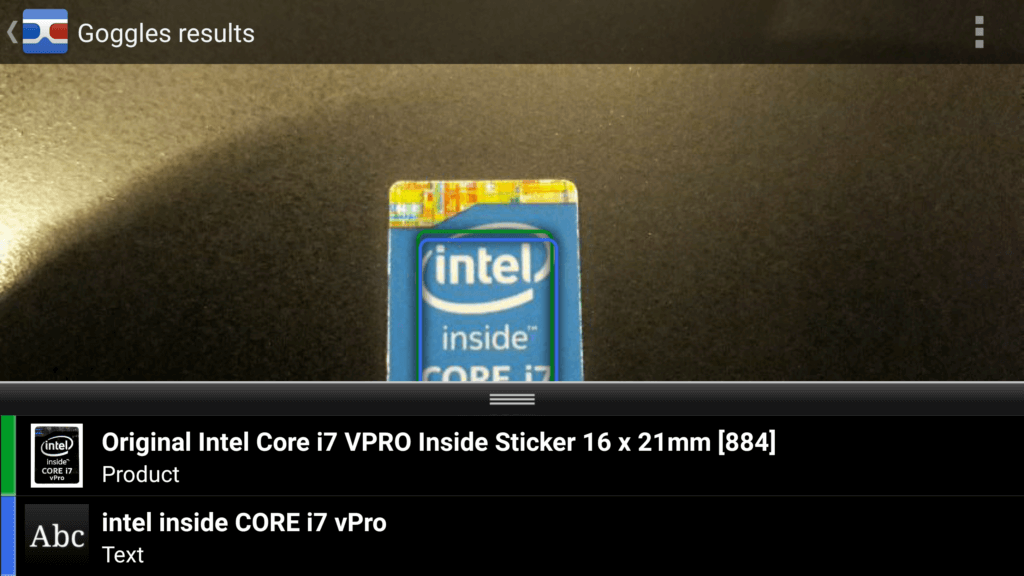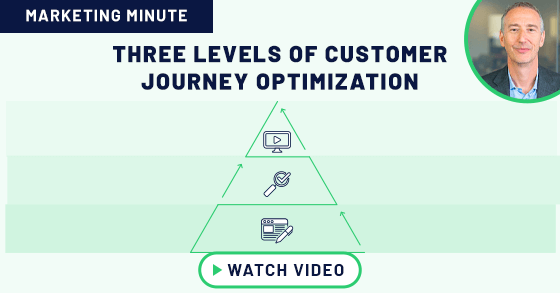
Artificial intelligence marketing tools help deliver the goods
Far beyond a dolphin swimming in the data streams (Dolphins can send and receive 20x the amount of information humans can with our senses), AI by its very nature (AI 10 Million Times Faster Than Humans) is set to make sense and insights into both large and small marketing data sets.
With all the talk around digital transformation, Artificial Intelligence embedded into your marketing technology stack creates a perfect opportunity to shift your marketing paradigm.
Lots of companies invest in emerging technologies with a functional focus. AI technologies for marketing become strategic advantages for those marketers, who can then use these technologies for higher conversions and customer retention.
Delivering more revenue through hyper-personalization and predictive analytics, Artificial Intelligence will scale your marketing impact.
AI tools help suggest the next best actions to take with each customer and can deliver personalized suggestions and offers to customers. Hyper-personalization through AI gives organizations granularity of customer data in real-time to assist in decision making, helping gain deeper customer insights and drive customer loyalty.
AI and marketing integration questions you may have:
Is your data management sufficient? 61% of IT leaders mark this as a high priority over the next 12–18 months.
Is your content strategy ready for AI? Be product-centric content with a customer-centric plan.
Is the future of AI-powered search audio-based or visual? We are a visual society
Is there a proven ROI? Forrester says 3 out of 5 (60%) retail and e-commerce firms expect to implement AI marketing technologies within the next 12 months.
Let’s explore some top areas of practical AI opportunities in marketing available today.
AI-generated content creation
Almost-human writing
20% of all business content will be authored by machines, predicts Gartner
AI-generated content, designed to read as though it’s written by a human for humans. Data insights and writing styles of these narratives depend on rules and formats created by your content group to best serve your targeted audience. Financial reports and sports reports, like results from the last Olympics we’re generated by machines using Natural Language Processing (NLP). These are reports are relatively easy to generate, as you know for sports as an example, who pitched, at-bats, runs and what player stats are before and after the game. Fairly formulaic.
People would be hard-pressed to be able to tell the difference between sports content written by journalists and those generated by the software.
Platforms like Quill and Wordsmith, sell automated content generation, which is useful for creating informative and interpretive content or product descriptions at scale. Overdrive has tested Quill with some good results in marketing report generation to date.
AI-enhanced Pay-Per-Click (PPC) advertising
Custom in-market audiences for search
In-market audience targeting segments users and classifies them based on their demonstrated in-market behavior and purchase intent Bhanu Narasimhan, Google’s director of audience products, says conversion rates for in-market audiences perform 10 percent better.
Life event targeting
New targeting options on YouTube and Gmail for “when moments”. Google has created three new user targets, include graduating college, moving, and getting married.
- About to graduate college
- Recently graduated college
- About to move
- Recently moved
- About to get married
- Recently got married
Research shows people buy a car within 2 years of buying a house. Other consumer products you could target a new home buyer with:
- Lawnmowers
- Garden supplies
- Snow removal equipment
- Appliances
- Linens, towels, and floor coverings
Ad variation serving optimization
AdWords now predicts each user’s ad preference and ad variations by letting the AI in their ad machines decide which subtle ad text variations, focusing either on price, value or selection would perform the best.
Data-driven attribution
Data-driven models evaluate how each touchpoint contributes to the eventual outcome of a user’s journey. Google Attribution runs response curve models and feeds data back into AdWords. The return data into AdWords ads to the machine learning of AI, optimizing conversions.
Bing intelligent ad features
Bing has added intelligent and personalized audience targeting, campaign optimization tools, and customized ad experiences producing increased click-thru rates (CTR) of 28% and 48% higher conversion rates (CVR).
AI-powered customer insights
The efficacy behind customer service interactions can be credited to AI-powered customer insights. Always on customer service speeds up issue resolution and customer lifetime value (LTV). Personalization throughout the customer journey is reliant on these highly defined customer insights.
Communicating with your customers on an individual level and those accrued insights are powered by the increasing ability to make sense of data, both structured and unstructured.
SalesForce, and their CRM, announced Einstein, an AI assistant. that collects data from sales, e-commerce activity, emails, SMS, IoT generated data, and social media posts feeding their customer insight algorithms.
Real-time analytics drive optimization decisions for sales and service recommendations. Natural language processing (NLP) and Natural Language Generation (NLG) are designed to return chats, emails, and relevant search results individualized for the user.
AI-powered predictive customer services, drives customer insights, reducing the friction of business processes for the customer.
Automated image recognition
AI advances in image analysis are driving searching and shopping. We see three different visual search processes from apps and search engines today:
- Image search reliant on textual indicators
- Reverse image search reliant on structured data to determine similarities
- Pixel-by-pixel image searches that enable “snap and search” by image or by parts of the image
Image-based social networks Instagram and Snapchat and text-based social platform Twitter are emphasizing images. After all, we are a visual society. Marketing pareses visuals within social media to extract brand cohesion via user-generated content and social signals.
The visual web and consumer behaviors of posting photos and images with hashtags stimulate machine learning. Google and Facebook with their vast amount of data, use their neural networks utilizing machine learning technology to improve their processes and results. Microsoft even has images within image recognition.
AI-powered voice search
67 million voice-assisted devices will be in use in the U.S. by 2019
| Alexa, what’s the weather? | OK, Google, what’s the traffic like? |
| Alexa, play music | OK, Google, what time is it? |
| Alex, open garage | OK, Google, order an Uber |

Artificial intelligence-powered voice-activated interfaces and smart speaker leaders Amazon Echo launched in June 2015 and Google Home launched in November 2016 move us way beyond keyboard and mouse. Amazon is 70% of the market according to eMarketer.
For a marketer, specializing in search, comScore data forecasts 50 percent of all searches will be via voice tech by 2020. Marketers need to develop a voice search strategy. Adding full sentences to your keyword strategy, with “how-to” and where do I” phrases will improve your chance of ranking in the search engines.
Tie in IoT and users will talk to their TVs, cars, washer/dryers, thermostats, lights, and all kinds of devices in and outside their homes.
Voice assist powered by artificial intelligence (AI) in vehicle-control systems will help autos physically respond and aurally reply. Voice is a critical interface for automakers with more than 77 million connected cars shipping by 2025.
Personalized website experience
89% of U.S. marketers reported that personalization on their website or apps resulted in an increase in revenue (think with google). Personalize pages so visitors get relevant, meaningful content specific to them.
Individualized customer experiences using predictive analytics and Big Data technology drives highly segmented preferences allowing for a more efficient customer journey. Reorganize products and pricing in real-time to enhance customer experience.
- Personalized customer communications
- Relevant discounts and coupon codes
- Product recommendations
Highly personalized brand experiences will ensure customers’ return. Personalized context, content, and service design will ensure brand longevity. Disjointed digital platforms will spell failure for others.
Programmatic media buying
Identity, not devices, should be the core of customer-focused marketing and that is where programmatic media comes in.
Ad operations management companies Sizmek and Xaxis are targeting users and are intrinsic in advertisers reaching the right user. Buying and selling ads in real-time powered by AI streamline ad operations management.
AI can analyze the complexity of media buying via programmatic. Buying and selling ad inventory through an exchange, connecting advertisers to publishers using artificial intelligence and real-time bidding for inventory across all channels maximizes inventory and adds another layer of efficiency and segmentation.
AI-powered Chatbots
The unrealized potential of using chatbots by harnessing technology to improve your business operations seems rather simple on the surface. They can be your personal shopper, they can send notifications about your orders and delivery.
Interacting with people is not simple. Companies are incorporating chatbots with natural language capabilities to help improve customer experiences on their websites and third-party tools like Facebook Messenger.
CMOs should consider starting with Chatbots
- 80% of businesses want chatbots by 2020 — Oracle
- Chatbots are expected to cut business costs by $8 billion by 2022 — Juniper Research
Virtual assistants are used everywhere from customer service to automating internal tasks. Intelligent digital assistants as conversational interfaces offer the marketer many advantages:
- Gather and analyze customer feedback and data
- Create a personalized interaction
- Ease the customer journey through the sales funnel
Key takeaways for digital transformation marketers considering AI
- Start with chatbots
- Use AI-enhanced PPC advertising
- Explore AI-powered content creation
- Deploy a personalized website experience
- Enable predictive lead scoring to prioritize the sales pipeline
- Solve for LTV with churn prediction and smart customer engagement
To learn more about companies creating Artificial Intelligence tools and platforms for marketers, download our live link map.
https://www.ovrdrv.com/artificial-intelligence-map/





